Middle East Experience: Our Guide To Egypt and Jordan (with a 30 hour stop in Jerusalem)
Part Two: Four Days In Jordan With 30 Hours in Jerusalem
Photos and Stories By Tab Hauser
Authors Note: Most travel articles hit “highlights” -- but in this “mini-guide” to our trip to Egypt, Jordan and with a quick stop in Israel, I have tried to convey a sense to the reader that they were right there along with us! The rendering of details and brief site histories will offer a window into our trip. Please see the "If You Go" section on the bottom for practical tips. See Part One for Cairo and the Upper Nile. For now, Welcome Aboard !
On To Jordan !
We arrived in Amman from Cairo on schedule and were met before customs by a representative from Dead Sea Tours, who put visa stickers in our passports and directed us to the proper lines. The guide and driver then arranged for the baggage to be placed in the mini-bus, and we driven to Le Meridian Hotel on this cold and drizzly night. We were pleased with the efficiency proceeding from the plane through visa/customs to our bus in just about thirty minutes. After check-in the kids begged off on the 40-minute panoramic night city tour, so the adults went. Here we saw Amman by night, passing some dramatically-illuminated ruins on top of a hill. We drove through middle class and also some very wealthy neighborhoods.
Arrive Night: New Years Eve, A Meal Fit For Sheik! Salads, Spreads, Bread Followed by a Wonderful Mixed Grill
After the tour we retrieved the kids for a traditional Middle-Eastern dinner at Reem Al Bawadi Restaurant. This was a low-key New Year’s Eve night for us, with the restaurant serving to both small and large families, business people and other tourists. After entering Reem Al Bawadi we passed the “coffee guy”. This was a traditionally-dressed man in long gray attire with a red kafiah and leather military-style belts draped over his shoulder connected to his waist belt. He looked very official monitoring the scene, and serving that thick rich Turkish coffee redolent of the mysteries of the Middle East in a brass pot heated against hot coals! After ‘coffee man’ we saw a Bedouin- attired woman making flat bread over a coal fire, using a semi circular pan over which the dough was spread; it baked quickly on the hot pan. We were then led to the main dining room featuring a tall domed ceiling; here we were seated at a square table with a three or four foot circular brass plate recessed into it. Traditional dishes were served, including hummus, baba ganoush (a creamy eggplant dish), different salads, stuffed meatballs, fried potatoes, sliced sausage and two different breads. When we were finished gorging ourselves on all these delicacies, a huge platter of ‘mixed grill’ was placed in the center and served by the waiters. This included lamb steak, chicken, pressed lamb and sliced steak. It was served on top of more flat bread, offering the chance to peel the bread from the plate and enjoy the juices that rolled off them. Desert was simple but delicious: juicy and tableside peeled oranges carved to look like flowers. For the New Year’s celebration we retired to one of our rooms at 11PM, opened a bottle of German sparkling wine and toasted the New Year. Exhaustion got the better of us and we were all down for the count before midnight. We ended the year with a great day in a new country for us.
On Hillside Above Amman and Looking Down to City Center Where Roman Amphitheater Is Still In Use
Amman To Petra
The next morning we enjoyed an excellent breakfast buffet, and then it was back on the bus at 8AM for a long trip to Petra. Rather than enduring three hours on the superhighway, we headed to Petra via the ancient King’s Highway , where we would have the chance to stop at Mt. Nebo. It is here that Moses was said to have witnessed the land of milk and honey, and then sent the Hebrews to the Promised Land.
Part Of the Dead Sea Scrolls In Small Museum On Hill Roman Amphitheater Still In Use Amman
Mt. Nebo has a Franciscan church on site with restored mosaics. Jordan is renowned for mosaics so accordingly our next stop was a factory / store to see how they are made. We learned that the stones are all locally quarried and cut for size in the store. We learned that the smaller the stones used, the longer it takes and the greater the skill required to produce mosaic goods (which accounts for the higher prices). There were salespeople endeavoring to connect us to their crafts and wares, but in the end we thought the prices were a bit high for the items we were interested in.
Sculpture Commemorating Moses On Mt. Nebo Jordan View to Dead Sea, Jericho and a Tiny Jerusalem on Top
Departing Mt Nebo, we were off to Madaba to see St. George Church. The St. George Church was built in 1184AD over the remains of a Byzantine church. The distinguishing feature of St. George Church is the detailed mosaic map on the floor which was made in 560 AD. This mosaic map clearly shows the entire region from the Nile delta all the way up to Lebanon, and westward including Jordan. Cities, churches, ferries, oases and other geographic landmarks are shown in accurate detail. From here we walked down the block for a traditional lunch, and then reboarded our bus bound for Karak , which was to prove to be the highlight of our day.
On Top and Inside Castle Karak
The village of Karak is built on a mountain with an impressive castle atop. Karak’s city walls look straight down, which offered outstanding protection from attack on three sides. The castle of Karak was mentioned in the Bible as a place of where a siege occurred twenty-nine centuries ago! The Crusaders built the castle we see today in 1161. After strolling about and observing the views high atop the castle’s walls, we realized Castle Karak is maze- like with multiple different dark rooms and tunnels to explore. We were very impressed with this place and would have explored further had it not been very cold and windy. After Karak we had a two and a half hour drive to Petra. Upon arrival we checked into the Crown Plaza near the entrance of the ancient city.
Maureen In One Of Karak's Hidden Rooms Exploring The Tunnels and Hallways
Castle Karak Height Protected It Against Siege Kids Escaping Cold Winter Wind By Ducking Into Tunnel Systems
Petra
We opened our terrace door at the start of our first morning in Petra and were treated to a pretty reddish sandstone terrain. It was a beautiful winter morning with the temperatures in the low 50’s, no wind and with the clearest of skies. We strolled from our hotel three minutes to the site entrance and passed by several “Indiana Jones” gift shops (Indiana Jones and the Holy Grail was filmed here.)
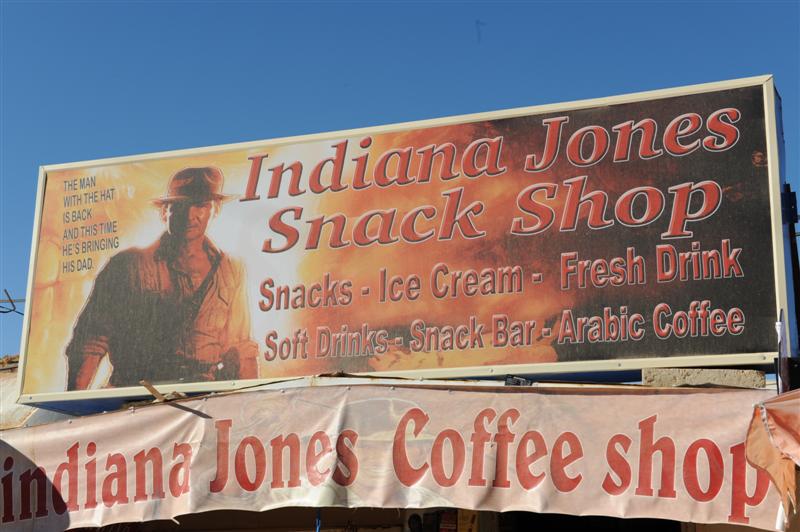
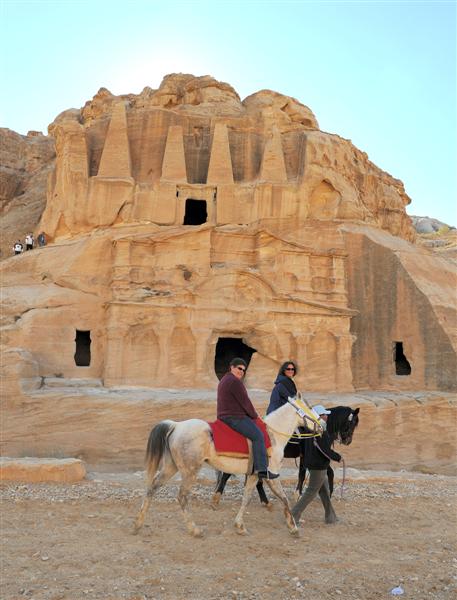
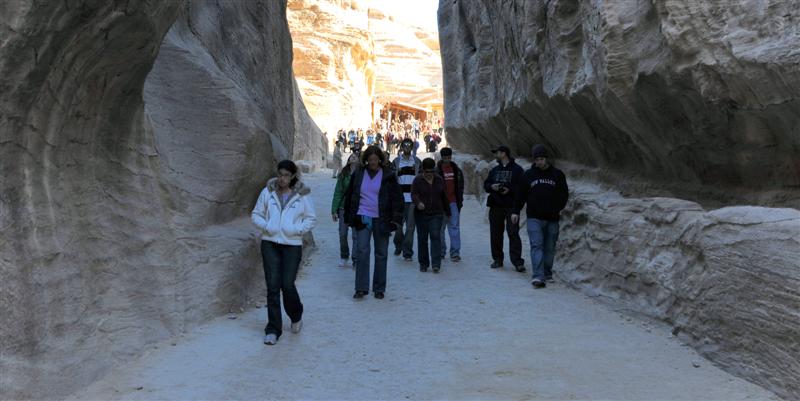
The Coffee Of Indiana Jones? Horseback For Ladies To Gorge In The 4/5 Mile Gorge To Petra
After passing through the entrance the ladies in our group opted to take horses for the first third of a mile to the entrance of the gorge, while the men walked. During our walk into the ancient city we were advised about Nabataean life in the city and how they were eventually conquered by the Romans in 106AD. According to Brown University’s web site on the site, people lived here for many centuries - but not much is known about the place until 312 BCE when the Nabataean’s inhabited and ruled the area. Our guide pointed out the tombs (holes in the sandstone on the cliffs) located outside the city and before the city entrance. Once the ladies on horseback were reunited with the men we walked another 4/5th of a mile through the narrow gorge until we reached the city. The gorge is officially listed at 1207 meters or 3959 feet long with a width of 3 to 16 meters (10 to 52 feet).

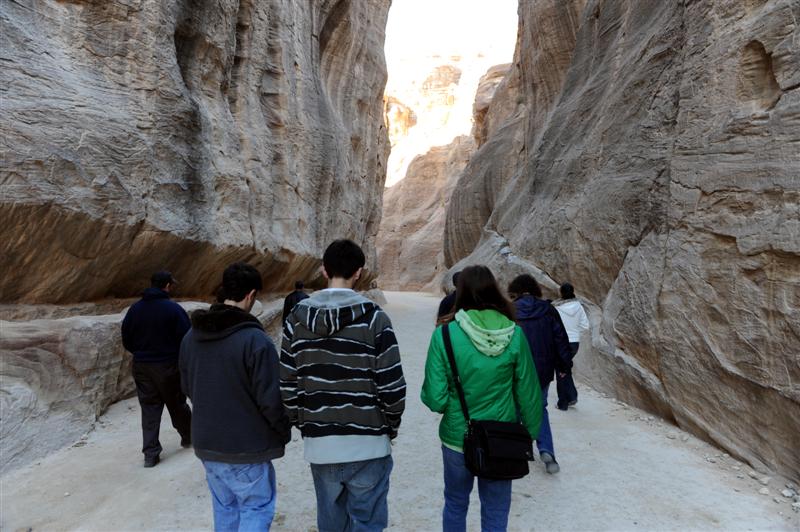
Inside Gorge To Petra. Note The Gravity Fed Water System On SIdes of Photos
We found the gorge walk very scenic.. The tall sandstone walls were lit brightly in yellow, orange and red (reflecting the colors of the sandstone), with some of it filtering down to the lower portions of the gorge walls near the trail. While walking in this section we saw the remnants of where the water pipes were built. Water was brought down from a dam built at the top of the gorge using gravity to transport the water to the city. Much of the success of Nabataean civilization in this area owed to their water management. Towards the end of the path we walked on what appeared to be a street made from blocks laid down nearly 2000 years ago by the Romans.
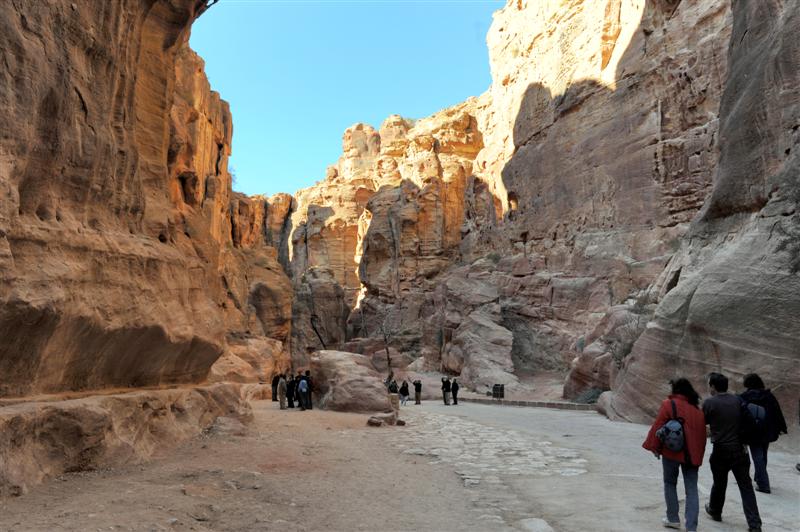
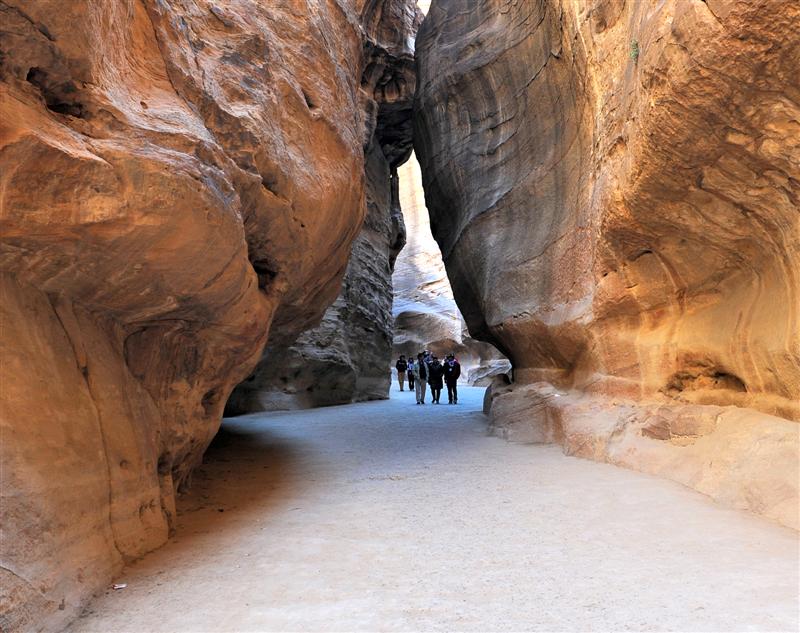
The Petra Gorge Widest and Narrowest Places Make It a Pretty Walk
Near the end of the path and through a crevice in the tight gorge we were finally able to make out the big red structure known as the Treasury. The Treasury is a massive building carved into the sandstone cliff. Our guide pointed out that this particular building is one of the best preserved in the area. It’s superior preservation was due to it being protected from the wind and rain by being situated inside a canyon. It is also protected from the top because the builders dug a ditch to channel any water on the cliff away from seeping into the mountain, thereby not leading to any further deterioration. At the base of the Treasury there is a large natural courtyard where tourists congregate for photos (with the Treasury as a backdrop). At the Treasury you can take the steps up past "ancient" uniformed guards and examine the large chambers carved into the cliff face.
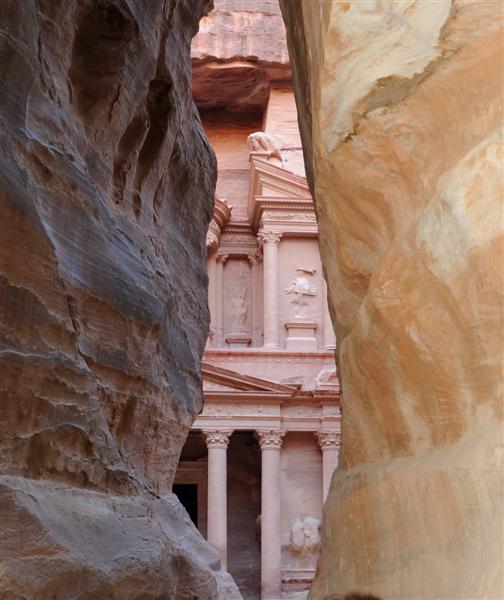

Petra's Treasury Building Peeking Through The Port Washington Group
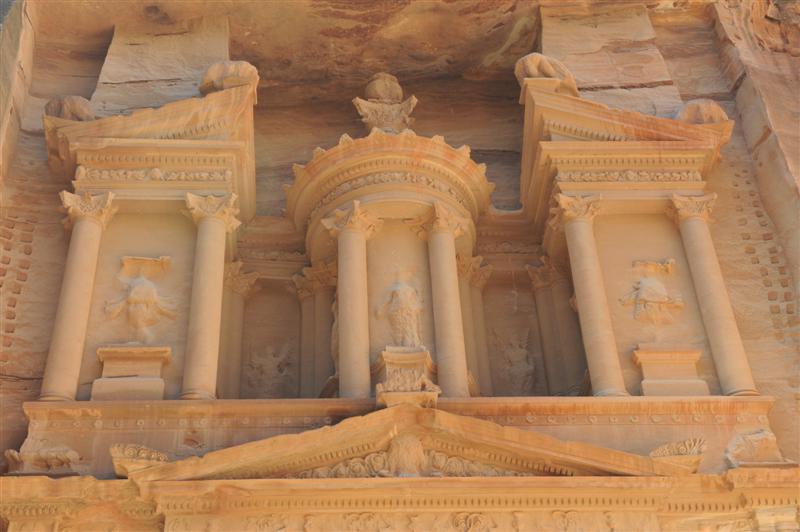
Inside The Petra Treasury, Note Natural Sandstone The Top of The Facade
After marveling at the Treasury we proceeded down the road in the gorge with structures mostly on the left side. Here we were advised that it was only about ten years ago that these facades were excavated. Our guide pointed out that the area we were walking on was actually much higher now than 2000 years ago, because of the floods over the centuries moving around the sand and layering it up. Further, we observed where future excavations can be conducted if and when funding becomes available. Continuing down the hill we saw lots of “holes” in the cliffs - evidence of lesser dignitaries tombs, followed by an eroded semi-circular theater which may have been used for worship. (It should be noted that this was the first place for a bathroom stop).
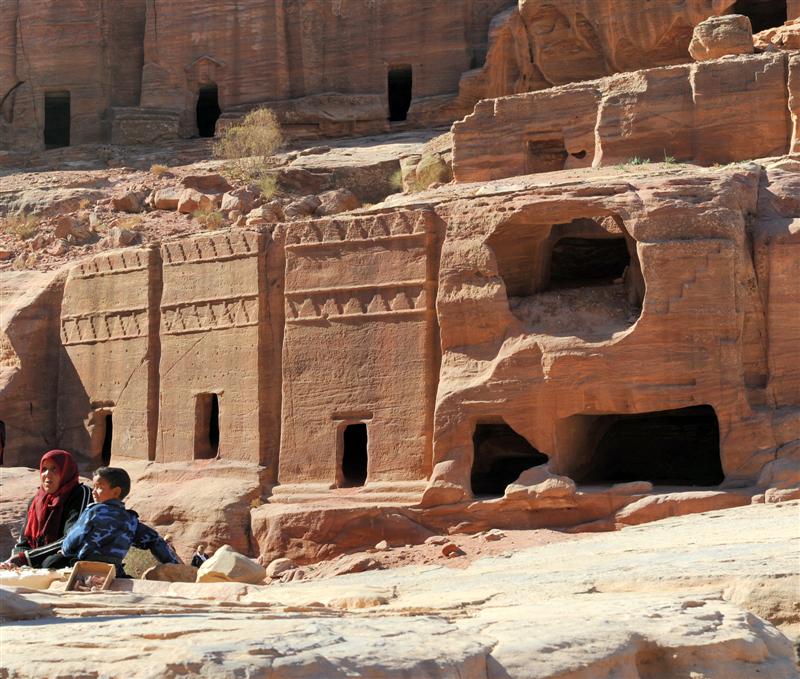

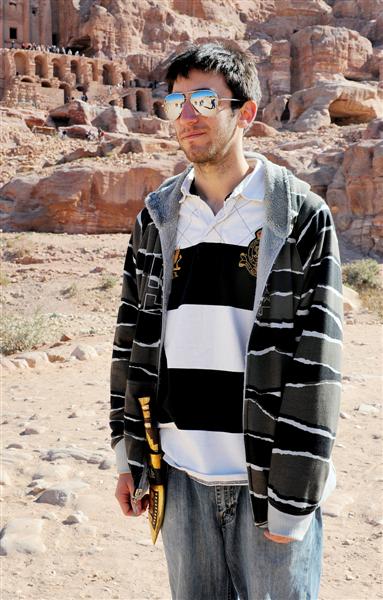
.jpg)
Our tour continued to the remains of a Roman street with more facades carved into the cliffs to our distant right. These facades showed much wear and tear from the wind-blown sand and rains due to their exposure to the elements. The Roman main street we walked on was constructed of large stones, and we strolled past the ruins of what used to be store fronts. The road led to a large structure used for worship. This place was carefully excavated by Brown University (so noted on a sign at this site) exposing walls and pillars. Continuing down the street were high walls of a Nabateaen place of worship which lay beyond the Roman church, where we had lunch and continued our tour of Petra via donkey -- onwards to what is called The Monastery.
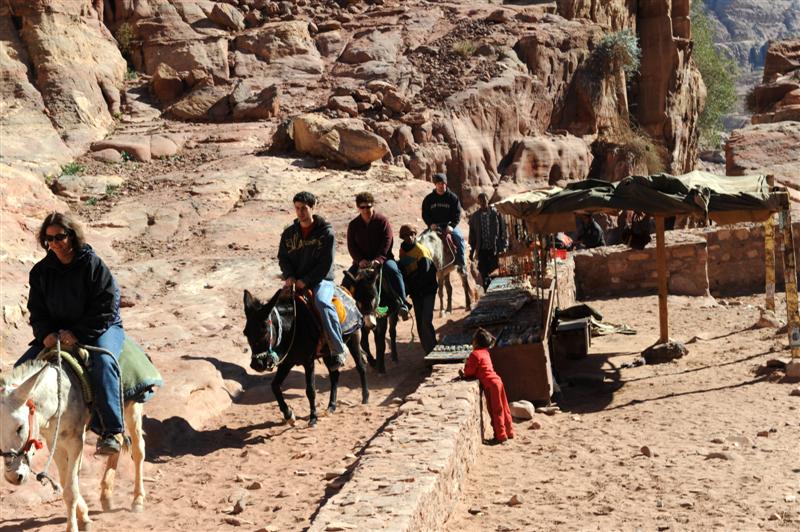
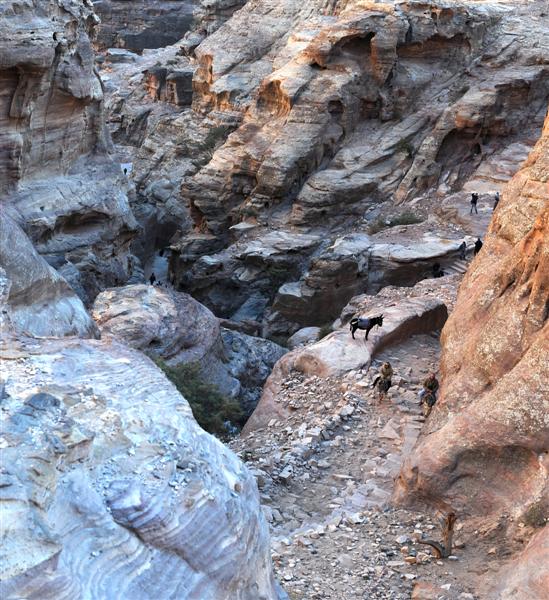
Donkeys To The Top Part Of The Trail Looking Down
Climbing up to the Monastery is a bit of a challenge, involving a steep trail with over 900 steps. If we had wanted Everest base camp we would have vacationed in Nepal , and besides that we were somewhat pressed for time so we hired donkeys at six Jordanian Dinars each for the ride which terminated perhaps 150 steps below the summit, leaving us a 20 minute uphill hike. Just riding the donkeys is quite an adventure in itself. These docile animals know the way by themselves. Our contribution to this enterprise was to give our respective donkeys a little tap with the heel when they decided to stop, and lean forward as we made our way up the steps; people yielded as we passed by. This was not a “scary” experience, but did take a little getting used to. After the obligatory group picture on the donkey, we hiked up to the top seeing the Monastery in beautiful glow of the late afternoon sun.
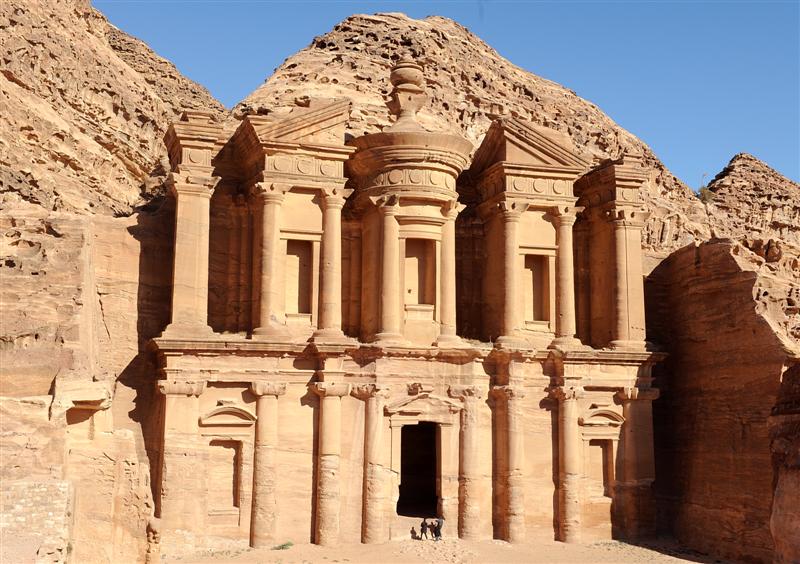
Obligatory Group Shot On Donkeys The Monastery, Top of Petra
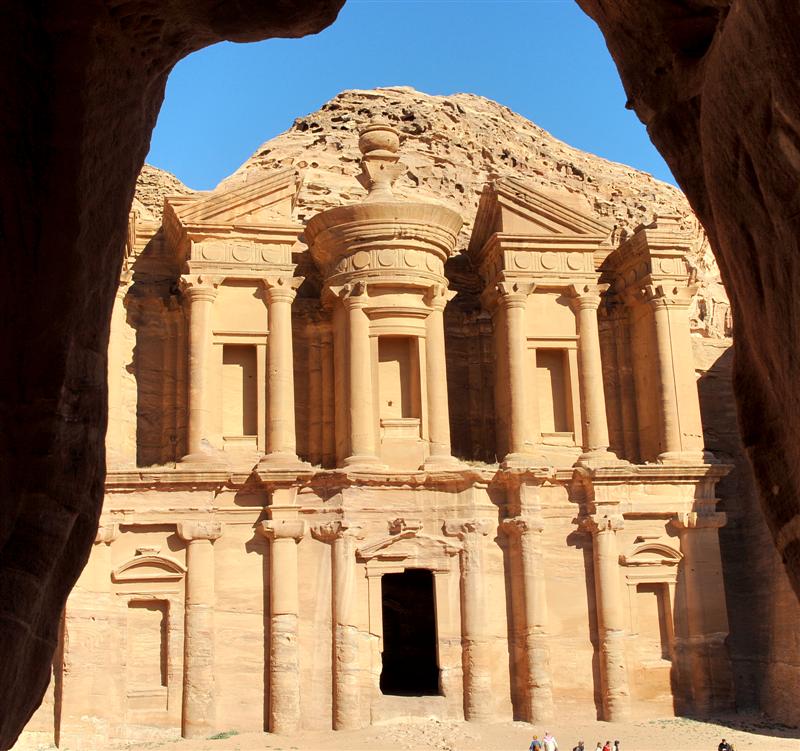
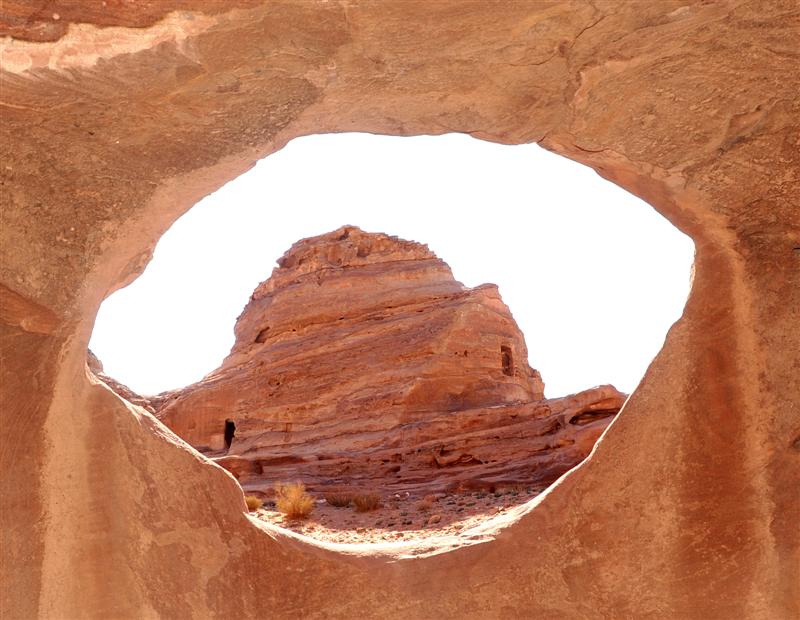
Photos of Monastery Taken From Ridge Behind Shop
The Monastery of Petra is the largest carved structure in the area measuring 47 by 48.5 meters (or 155 by 159 feet). It has a large room carved inside where an altar can be seen. The plaque in front says it was built in 2 AD. Opposite the Monastery is a souvenir shop which specializes in Bedouin jewelry; and the merchant there will also be happy to sell a hot or cold beverage which can be enjoyed while absorbing the view and fresh clear desert air. Behind the shop is a small rock dome with holes cut inside. This is a great place to take a photo of the cliff façade. After plenty of photos at this spot, we made our way down passing Bedouin women displaying their goods on tables at virtually each trail switchback. Here we took in the magnificent views, and took our turn yielding to donkeys making their way up with tourists. Do not miss taking this part of the trip to Petra! The hike down was easy and quick.
.jpg)
.jpg)
Corner of Monastery Up Close The View Walking Back Was Reminiscent Of The US West
Once at the bottom you can make the long walk back to the entrance (if you have the energy and time…) or you can hire a donkey or carriage to bring you back. Remember to bargain if you elect to hire them. We decided to walk back out but soon realized that the slight almost unnoticeable decline the path had the entire day transformed our return trip with more wear and tear. Practical Tip: Wear your most comfortable shoes and allow for an the entire day at Petra. Also go easy on liquids in the morning as the first bathroom stop is a quite a bit into the site. After the bathroom stop you can buy water from one of the shops in the area – and you should certainly do so to stay hydrated. Our trip in January kept us cool and comfortable; I was told it is brutally hot in the summer months so get there first thing in the morning.
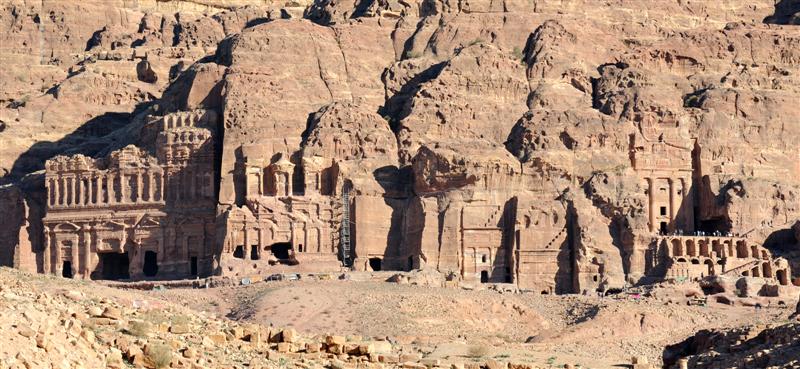
The Worn Section of Petra Due to Facing The Wind and Rain Over For Over 2000 Years
To The Roman Ruins At Jerash
For our last full day in Jordan we switched plans of going by Jeep to Wadi Rum or the desert of Lawrence of Arabia as the tour agencies call it and took the bus 3 1/2 hours passing Amman to see the Roman ruins of Jerash. Jerash is one of the best preserved Roman cities in this part of the world. The Romans conquered the area in 63 BC and built up a city here. It was at its peak from 100 to 130 AD and declined after the Persian invasion in the year 614. An earthquake destroyed much of the area in 746.
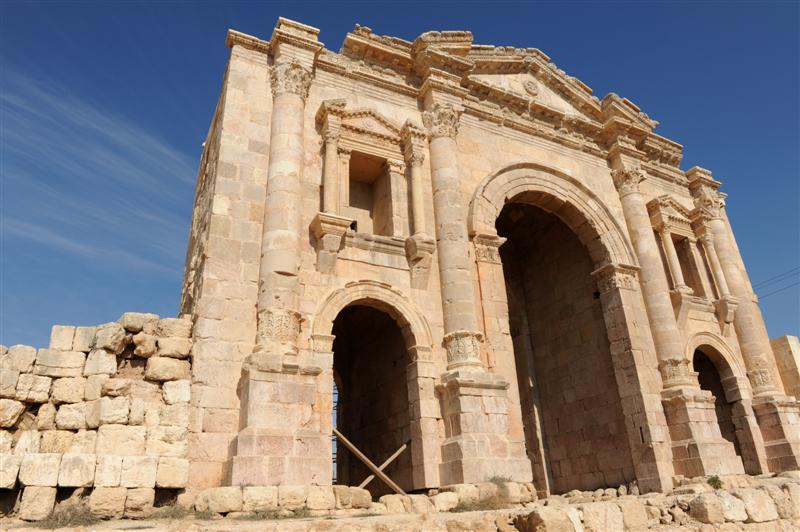
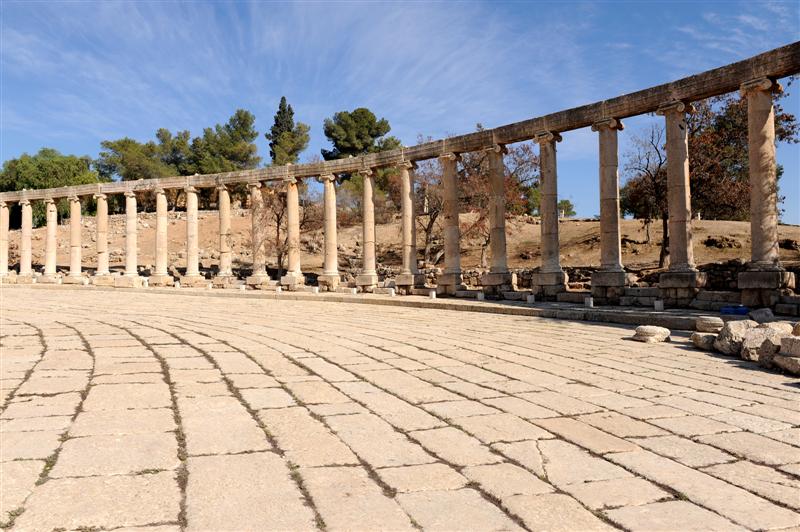
Arch of Hadrian The Circus Or Village Square Of the Times
To get to this ancient city one passes an old hippodrome, which is said to the smallest ever built by the Roman’s. Tourists are treated to twice-daily reenactments of Roman sword fighting, with even an old fashioned chariot race (Ben Hur style of course!) . From this spectacle we proceeded underneath the site’s Arch of Hadrian, which was built in 129 AD in honor of the Emperor’s visit. The next part of the Jerash site offers many pillars which comprise a ‘circus’, or prototype ‘village square’. This is an impressive and large area. From here we walked down the original streets, where we were able to discern the wear pattern in the stones of the oxcarts and chariots from centuries past.
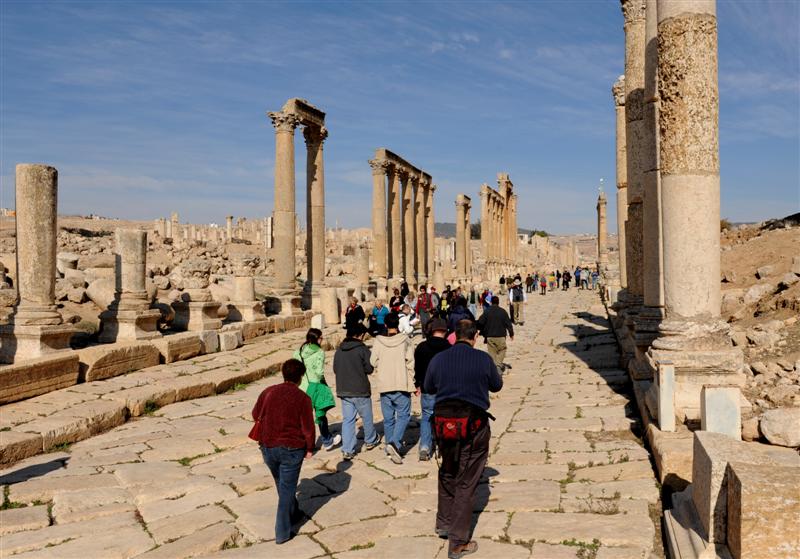

Jerash’s main street has many ruins on it or adjacent to it. After walking along the main street with more pillars and ruins on either side, we found ourselves at the main intersection which in antiquity hosted many additional stores. Our guide pointed out three temples with many arches remaining standing, as well as a small theater for official meetings – all in a state of excellent preservation. We also saw the town’s main theater for entertainment which was in a different section.
%20(Medium).jpg)
.jpg)
Looking From Top Of Hill To Circus at Jerash Newly Excavated Stores By Main Gate
Much of this site still remains to be excavated. In fact just while casually strolling about in some areas it is possible to pick up Roman or even pre-Roman shards of pottery which are mixed in with soil and sand on the ground. And yes, we took a few small pieces lying on the ground. Our guide found an eroded coin smaller than a US dime called a Phillipus on the top of the dirt, and gave it to us. He said coins and pottery wash down after the occasional rains. The kids in the meantime found a freshly-excavated wall near some construction and picked at it, unearthing bones and more pottery -- but they put everything back in its place after studying it. I also found a small triangle of what looked like a worn red piece of glass.
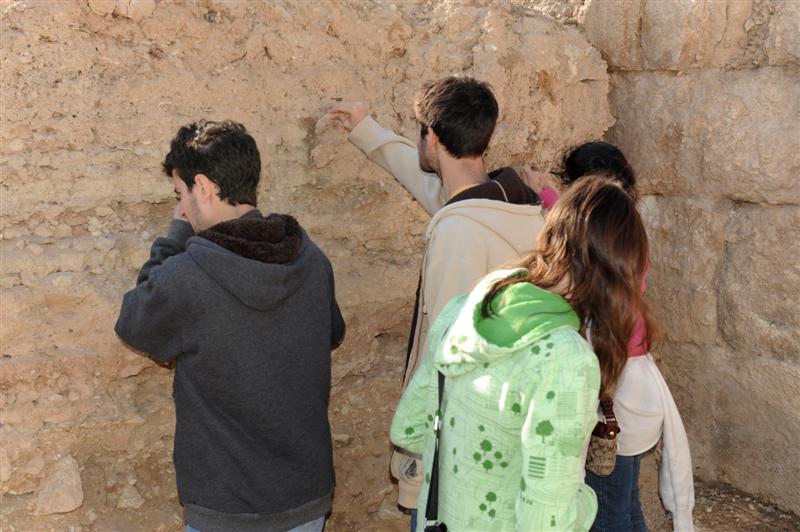
%20(Medium).jpg)
Inspect Layers Of Roman Artifacts At Dirt Wall Bagpipes Playing At Roman Amphitheater
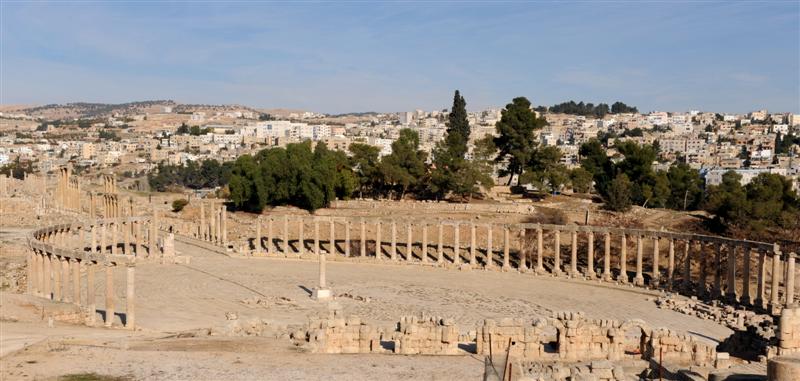
Ancient Jerash With The Modern City In Background, Note Main Street Leaving CIrcus
If you go to Jerash, allow around two hours. If you are inclined for some touristy kitch add another hour for the chariot race and sword fighting show which the kids wanted to pass on. There is a serviceable Middle-Eastern style buffet for lunch. If you are planning a holiday to Jordan, I would recommend Jerash and one of the nearby castles to make this a double-header day. Armed with a good guide book, you can take a taxi here and conduct your own tour.
One More Stop On This Trek...
The last destination of our trip was Jerusalem to attend our friend’s wedding. We arranged for our tour operator Dead Sea Tours to pick us up at 11AM and take us to the Allenby Bridge. Here they would facilitate us through the check points and handle our passport paperchase on the Jordanian side. Once our passports were cleared, our bus negotiated four more check points on road to the bridge. When we finally were on the actual bridge, we observed that the redoubtable Jordan River was actually at this point no more than a creek ! Once over the bridge our driver went through two more check points before we were finally allowed off to step off.
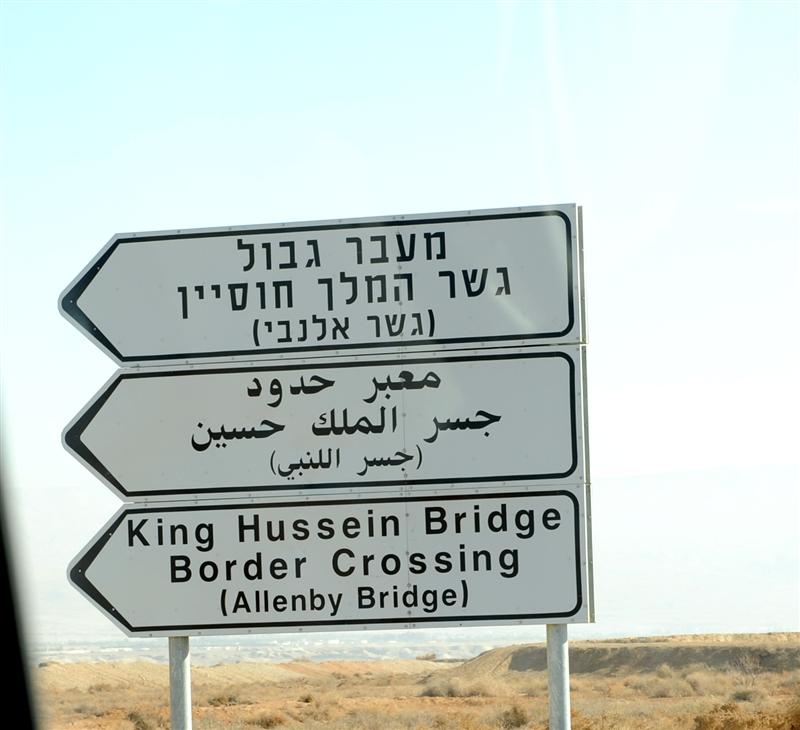
.jpg)
Old Jerusalem Walls With City Behind It
Crossing the Allenby Bridge into Israel is a rather methodical process! All bags were quickly computer- tagged with our passport number assigned to them, and then sent through an X-ray and bomb-sniffing machine. We then went through a metal detector and “sniffing” machine removing everything except the basic layers of clothes. We were obliged to remove eyeglasses, belts and jewelry in some cases. After stepping through we also had to stand on a box that examined our shoes. Once we cleared this area, we had to stand in line for the security “quizzers”. This line had young ladies trained to ask questions as well as observe body language; resulting in either further questioning and examination or admission to Israel. After this process we were on another line for the final checkout for entrance to Israel. When we got to the head of this final checkout we were advised that the security team had found something suspicious in our son’s bag, and we had to wait five minutes until someone was available to conduct his investigation. They asked questions about our son’s ornamental dagger which he bought in Petra. They explained to us that it is a weapon, and they wanted to know why he had it. We advised them it was for his collection at home, and after being told not take it out of the bag while in Israel, we were allowed to proceed. Another member of our party had acquired a Koran for his book collection while in Egypt, and his bags were also given a search. Finally after being there almost an hour we were free to meet our van which was waiting to take us to Jerusalem. This turned out to be a pleasant forty-minute ride to get to the city, and another fifteen minutes to get to the hotel due to delays from city construction and traffic. We would recommend allowing three to four hours to cross the Allenby Bridge if you go to Israel from Jordan. The alternative is to take a thirty-minute flight from Amman to Jerusalem, but the time saved is not that great because you will need to get to the airport ninety minutes in advance of your flight.
Our primary reason to be in Jerusalem on this trip was to attend a friend’s wedding the very same afternoon we arrived, which was being celebrated at the famed King David Hotel. We were staying at the Edom Hotel which was across to the King David. After the wedding the kids headed back to the hotel while the parents and the groom’s best man and girlfriend headed to a café on Ben Yehuda Street for a night cap and to catch up on old times. Ben Yehuda Street had mostly young people hopping in an out of the cafes or relaxing in this stylish pedestrian walkway.
.jpg)
.jpg)
Scenes From Mechane Yehuda
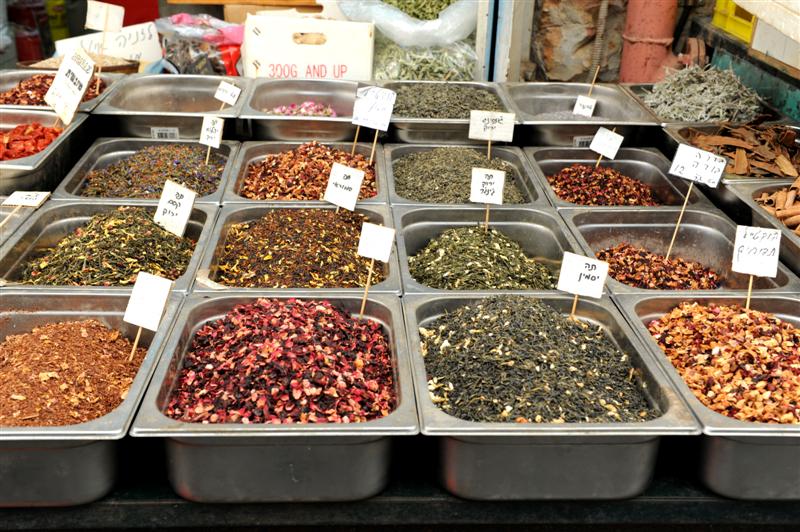
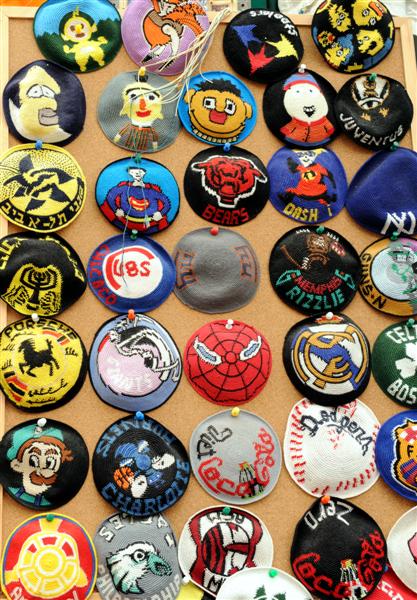
.jpg)
With only one full day in Jerusalem and mindful of our 8PM van to the airport, we decided to just make the most of the day by pacing ourselves - and recognized that Jerusalem simply can not be seen between 9AM and 5pm ! After breakfast we walked next door and climbed the 222 stairs to summit the YMCA tower for the view. From there we walked 20 minutes to the meat and fruit market off Jaffa Street called Mechane Yehuda and to say a quick hello to a family friend in the area. At the market we saw Israelis going about their daily business of shopping in the various stalls. We saw fresh breads laid out neatly, tasted the freshly- made halva and purchased figs, dates, nuts and strawberries to enjoy while we strolled about. We continued through the narrow fruit and meat section before diving upon the falafel and shwarma stands for our lunch. Shawarma was in very high demand by the kids ever since they were introduced to this ubiquitous staple in Cairo. It is a type of gyro sandwich -- but tastes better !
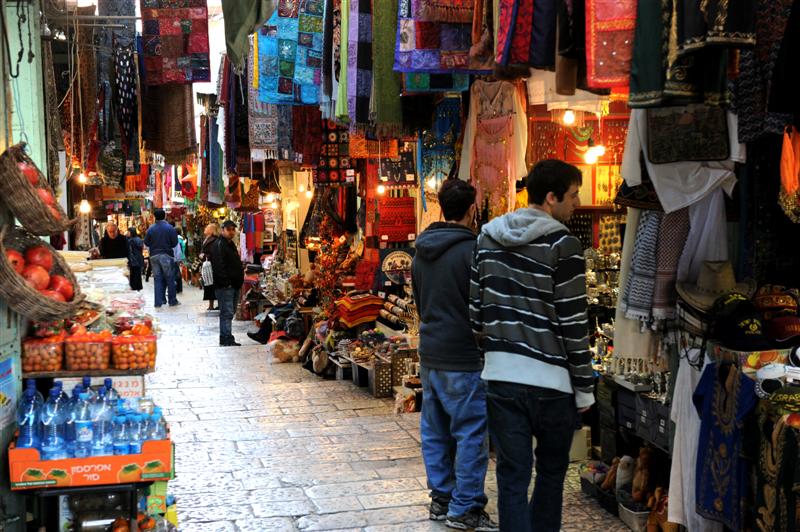
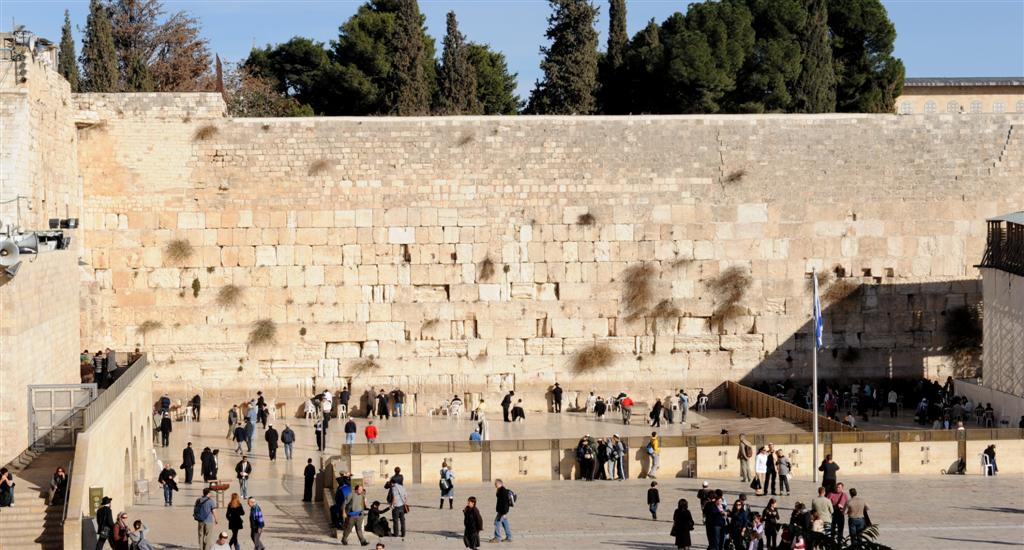
The Old Market On The Way To Western Wall
With the Israeli version of fast food over we piled into two cabs to visit the Old City starting at Jaffa Gate. From the Jaffa Gate we walked on King David Street towards the Western Wall. This street brings you past a gauntlet of vendors selling everything in great God’s green Earth not limited to carpets, pipes, jewelry, and religious articles for Jews and Christians, as well as T-shirts, olive wood carvings, spices, clothing and everything in between. We appreciated that in this market (compared to the souks in Egypt) is that we were not harassed quite as vigorously. The shopkeepers certainly endeavored to strike up a conversation with you, and did almost whatever it took just to get you into their store, but they did not actually block us or shove items in our face as was too often the practice in Egypt. Once in a store, custom and personal honor requires one to bargain, then bargain again harder -- and of course, buyer-beware as regards quality is in effect.
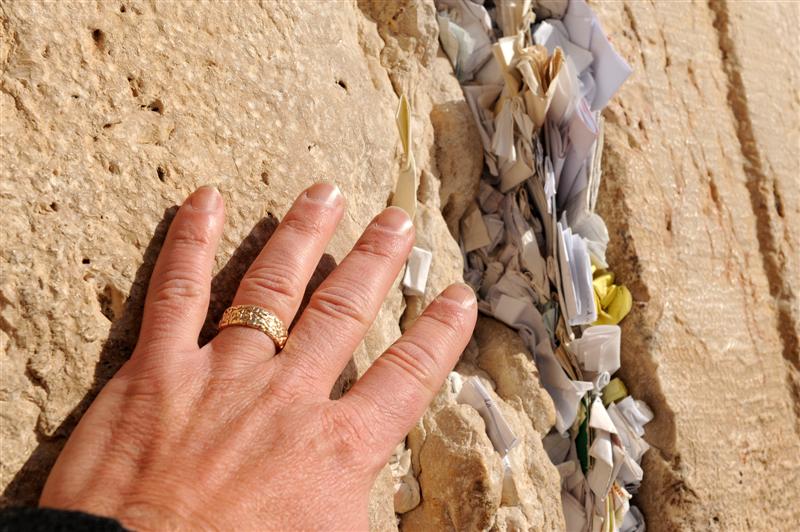
.jpg)
Messages and Prayers In Every Crevice On The Wall
Once the obligatory Stars of David, T-shirts, magnets and few other things were purchased, we finally arrived at the Western Wall, which is protected with a security checkpoint which must be cleared before walking down the steps to approach this awe-inspiring site. We were favored to view the Western Wall in a glorious afternoon sun. The Western Wall (or Kotel as Israelis call it) is most important religious place in Judaism. It dates back to 19 BC. With Israel’s religion sites administered by the Orthodox religious authorities, the Wall is partitioned between a (larger) men’s section to the left and women’s section (smaller) to the right. Our group split up by gender, and each group independently approached the Wall. We observed hundreds of tightly rolled papers in the Wall, each of which we knew to be inscribed with heartfelt wishes or prayers. These small pieces of paper are inserted into whatever crack or crevice might be found amongst the thousands of other small papers others have jammed in. At the Wall Orthodox worshippers – some in Hasidic garb – but others in Army uniforms or just plain civilian garb - can be seen not only praying, but in some cases fervently embracing the Wall and pressing their heads or cheeks against it.
.jpg)
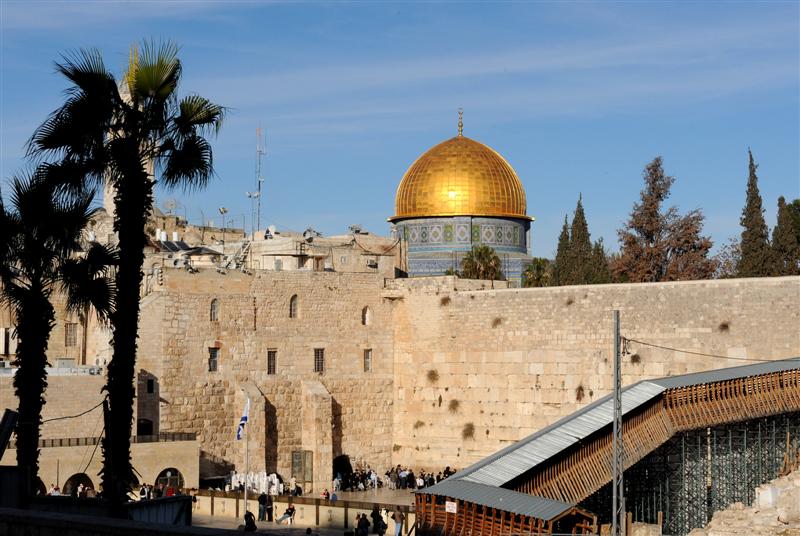
People Getting Emotional At This Religious Center Dome Of The Rock Brightly Shinning On Top Of Wall
After paying our respects to the Wall, we regrouped and strolled through the narrow streets and alleyways in Jewish section, then sojourned into the Christian section, intent on visiting the Church of the Holy Sepulchre. The Church of the Holy Sepulchre is held to be where Jesus was crucified and buried. The word Sepulchre means tomb or burial chamber. The site of this church has been a place for pilgrimage since the 4th century. The actual church construction started in 326AD.
.jpg)
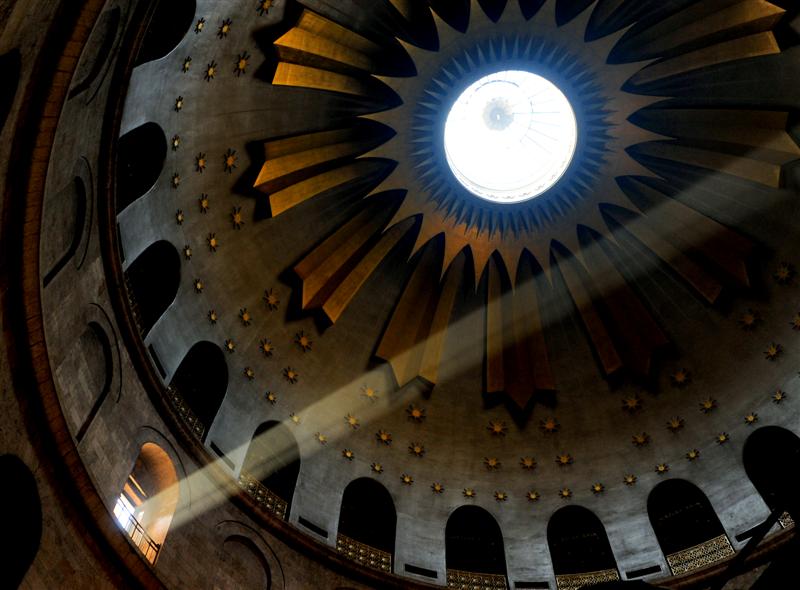
Church of the Holy Sepulchre.
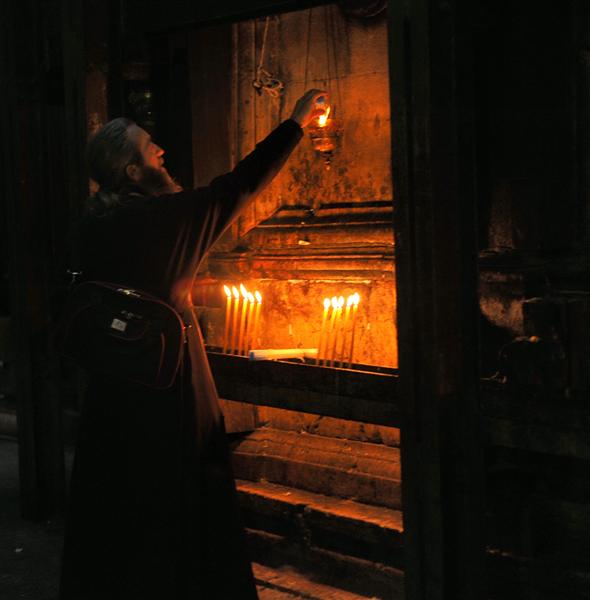

The Church itself has been reconfigured many times but also neglected over the centuries. In 1959 the Armenian, Eastern (Greek) and Roman Catholic religious authorities who collectively administer the Church agreed to a major renovation plan. Besides the above three sects, the Ethiopian, Coptic and Syrian Orthodox groups oversee certain shrines and parts of the building as well. Interestingly enough, these sects are extremely competitive with one another, and what seem to be minor infractions (such as a door being left open or a chair moved in the shade without authority to do so) have lead to fist fights and people being hospitalized. The other problem is that what is considered “common ground” between the sects cannot be touched because of the lack of agreement between the sects. This has lead to areas inside the Church complex which are now badly in need of renovation. A classic example of common area history is a ladder left underneath a window sometime in 1852 – which is still clearly visibly there because no sect has the right to move it. Interestingly enough the front door is not controlled by any Christian sect, but by two old Arab families since 1192. One family oversees the front door, while the other holds the key and opens and closes the Church each day.
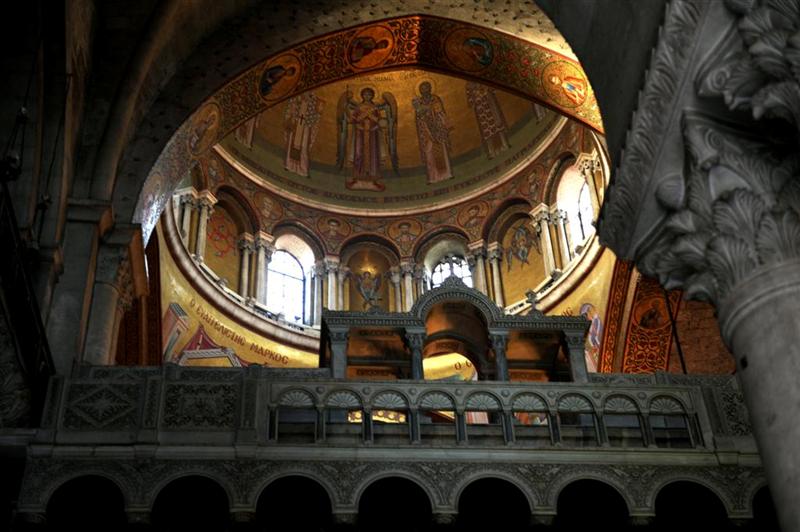
.jpg)
The Walls Near Jaffa Gate
From the Church we weaved through the small streets and alleyways, making our way back to the Jaffa Gate with a stop for fresh- squeezed grapefruit and pomegranate juice. Then it was through the modern mall near the gate, and up to the King David Citadel to say good bye to friends. Our last meal in Israel was informal and fun; our group walked up the hill and adjourned for our shwarma swansong at a highly-recommended informal restaurant. From here it was back the hotel to catch our van back to the airport for our long flight home. We were all looking forward to returning home from our intensive but exhilarating adventure in Egypt, Jordan and Israel !

.jpg)
Last Shwarma Before Leaving
IF YOU GO: For Part One and Part Two Of Middle Eastern Experience
Flights (Overseas) :We found Delta’s coach class to Cairo lacking. The seats were basic. Our aircraft had poor leg room and no individual TV screens which virtually all airlines have these days for long international flights. We flew Delta because it was non-stop to Cairo and our return originally from Jordan was non-stop as well. Given a choice I would consider Egyptian Air, which I have been told has better service aboard. For travel to Israel, consider Continental. If you fly business class, it should be noted the Delta seats were not the lie-flat types that every airline uses now.
Flights (Regional) Egypt Airlines ran efficient clean planes that were on time and offered a snack for the one hour flight to Aswan and back from Luxor. Our flight on Royal Air Jordanian was a very pleasant one hour and ten minute flight in a comfortable two-aisle Airbus 340, and we were provided a sandwich. After boarding aircraft in forty seven countries and six continents I have to say that the fastest way for people to get on an airplane is just to call for the flight and board it like we did in on the regional flights. This business of boarding by rows in my view is just not efficient compared to the way most of the world boards aircraft !
Hotels and Cruise Boat: We stayed at Le Meridian in Heliopolis before and after our cruise. This was a good hotel class for the price, but is not located in a tourist- friendly area. If you want a hotel where you can come and go at leisure with shops and places to eat, you should consider staying downtown. This is likely to add about $100 to the room. An alternative to downtown is to stay in Giza. The ride to Cairo is about an hour – provided traffic moves normally. In Petra we found the Crowne Plaza comfortable. We were assigned terrace rooms with the Petra desert view. In Amman we stayed at the Le Meridian and found this to be an excellent hotel with many restaurants onsite. In each hotel the breakfast buffet was excellent and a great way to start each a long, fascinating and inspiring day !
Nile Quest was the cruise line selected by our wholesaler to cruise from Aswan to Luxor. This was a five-star boat. Our cabin was quite comfortable. The food was buffet-style with a separately- charged a la carte menu (which we did not use). The food we found to be good but they were best on the Middle Eastern themed night. I would recommend the four-night cruise over the three-night one which we did, because it starts in Luxor -- which is the place to be for the extra night. If you want to splurge there are smaller six-star vessels that really excel in service and food, but the price can be as much as thirty percent higher. If possible do not chose less than five-stars unless you are severely budget-constrained.
Security:
Being an American (or Westerner) in a moderate Arab nation causes one pause. Security is taken very seriously in Egypt. We were told that the government puts government security officers on American tour buses. The reason for this is because tourism is a major cornerstone of the entire Egyptian economy, and the government does not want anyone being hurt – which will negatively impact tourism. At first I was a little surprised to see a man on our bus wearing a business suit, leaving me to wonder just how capable the person was. I noticed a slightly larger bulge off his right hip which a Bulgarian small machine gun so we knew he was all business. During our stay in Cairo we had different guards with us. They usually tagged along behind, watching from behind. We also noticed that security was taken very seriously at each site. No one gains access to a tourist site or hotel without getting bags X-rayed and being checked through a metal detector. Tourists may get waved through if the metal detector beeps, however locals will be more scrutinized. We also saw evidence of security in the souk in Cairo, where security personnel would walk around the main square and check behind the benches with a clip board documenting where they were. There were also the “tourist police” stationed about every fifty to seventy-five feet there as well as on the corners of our hotel. This is in an effort to thwart attacks similar to the attack of 2005. Unfortunately it was only about 6 weeks later from our trip did two small bombs get thrown into the square killing a French High School girl and wounding her classmates and 3 Saudis. One hand made bomb fortunately was a dud. Caution and paying attention is the word here so pay attention to things. At Abu Simbel we traveled in caravan with a soldier on board each bus. In Jordan we did not have the personal security, but did have adequate hotel security. Israel has the most relaxed security of three countries. There were guards outside every coffee shop and hotel, but like the one in front of our hotel, they seemed mostly interested in studying or reading. It was interesting to note that the hotels we stayed at in Egypt and Jordan all had barriers to keep cars away from the front, but the King David Hotel has an inviting circular unsecured driveway allowing a vehicle to just drive right up to the entrance. We also did not see any display of security at the market in Jerusalem as I would have expected. There was however, visible security within the Old City and at the Western Wall. I want to make very clear that at no time did our group feel unsafe. We all felt concerned and a little nervous given the war going on in Gaza and were concerned how it might affect us if the protests got out of hand. The rule here in general is pay attention to your environment when traveling about, and to pay careful attention to the news. We listened to BBC regularly when it was at the hotel or kept ourselves posted by reading up on the Internet. BBC seems to have more reporters than any other news network and were the best. Tensions did get a little high in Jordan during our last three days there. With that said we decided to be Australians if anyone ask until we cleared the Allenby Bridge !
Using A Wholesaler:
I am the last person who likes to be on a structured tour, but there are some trips where it is recommended. We were in Egypt and Jordan to tour intensively, not sleep late and weigh options for the day! With this trip we evaluated three tour operators and compared prices and itineraries. We then fine-tuned several aspects of the trip with regard to accommodations and itineraries. We picked Dead Sea Tours in Jordan because they came recommended to us , and they were offering an itinerary similar to the U.S. tour operators but for almost 15 percent less. Dead Sea Tours in Jordan then subcontracted Wisdom Tours in Egypt to handle that section of the trip. Wisdom is a large company and they really took great care of us. We really liked the full-size bus for us to spread out in, which gave each person four seats. We had no complaints with Wisdom or our guide. In Jordan we were given a minibus sitting three across, making our long rides a little cramped. Our guide in Jordan did not seem to like taking us around, perhaps because we were Americans. I say this because he made a couple of comments during our three days together. He was also not used to touring with teenagers. We met the owner of Dead Sea Tours and found him to be a likeable person. If you use their services I would advise him about your group and make sure the guide is expected to be a reasonable fit with your expectations. Finally , if using a wholesaler or any tour group, pay by credit card! That way you will have at least some protection if services promised are not delivered. We paid a three percent credit card fee to Jordan rather than wire money in advance.
The Representative or Fixer
At each place we flew to a representative acted as our fixer. The fixer’s job was to make sure things go smoothly. This included meeting us before Customs, handling our baggage, standing online to get us our boarding passes, and even checking us in at the hotels in Cairo. This made our traveling much easier and it amounted to usually a $10 or $20 tip for the entire group for each occurrence. At Cairo Airport heading to Amman while standing near the ticket counter, my daughter asked why we would need to have someone help us when in the past we would do everything ourselves. As if almost on clockwork three men started yelling at each other at the front of the line. One of them was our representative. The guide said he was yelling at them to ensure that our thirteen bags were checked in as they are supposed to be, and not to be messed around with. I am sure there was a small tip from him to facilitate this. You certainly can travel as a family or by yourself, but having someone look after a group for a few dollars is well worth the investment!
Minor Issues and Warnings:
If you travel by yourself stay in the main tourist areas, and do not stray to the outskirts. Make sure you know what the taxi will cost in advance, and bargain. A taxi hailed by the hotel will cost more money than flagging one down in front of it. Using a hotel car will be more money yet, but may also be more comfortable than the Egyptian cabs. (We caught a forty-year old Russian Lada for the five minute ride back the hotel, and I would not want to sit in that car going any distance due to comfort and safety). With taxis it is perfectly acceptable to just give the money to the driver and walk out if he asks for more money. Always check with the hotel desk to make sure your destination is open and safe to travel to. When you go to Abu Simbel be absolutely sure that the tour is arranged with your boat or hotel.
Do not drink any tap water and avoid brushing your teeth with tap water in Egypt. It is also advised not to eat unpeeled fruits and vegetables. We did cheat on this after four or five days enjoying some of the wonderful salads that came as first courses. With regards to Nile Cruising, we had heard stories of people getting sick on different boats, but we were fine on our boat.
Hindsight Being 20-20:
(Things we would have done differently if we knew then what we know now):
Our biggest mistake was not doing the four night cruise and instead selecting the three night cruise. The four night cruise gives you more time in Luxor. For Cairo if you want to splurge on the hotel room, stay at the Marriott or Hilton downtown, and then stay in Giza when you return from the cruise. Also, tour Coptic Cairo on the way to or from the Pyramids. This was a big mistake for us, which added nearly one and a half hours of bus time because we did not understand the logistics properly. In Jordan we might have passed on the Church of Madaba unless you have a compelling interest in mosaic maps on old church floors, and we might consider passing on the Mit Rahina Museum in Cairo.
If we had had a few more days, I would have considered adding Alexandria the itinerary. We might then have traveled west on the coast, where the kids could have done sand boarding. Also, if you go in warm weather you should certainly consider one of the coastal resorts on the Red Sea for some diving or down time after all that intensive touring!
Remember: A trip like this takes planning between you and your tour wholesaler. Just do not take what is offered to you unless you check it out. This way there are less surprises.
*Special thanks to my editor Gary Lehman who pushed me along to post this*
Please email any questions to tabh@hascorelays.com
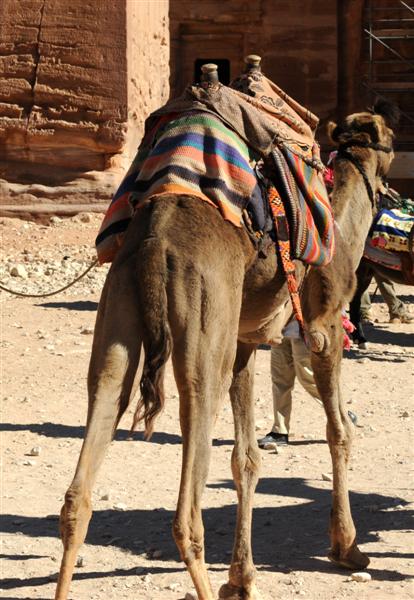 The End? Photos Copyright tab hauser and www.tabhauser.com
The End? Photos Copyright tab hauser and www.tabhauser.com